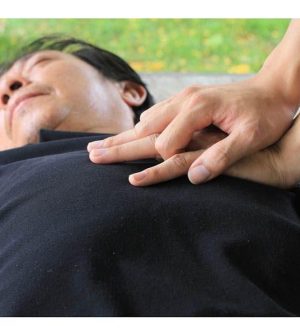- Navigating Your Midlife Crisis: Embracing New Possibilities
- City Raccoons Showing Signs of Domestication
- Mapping the Exposome: Science Broadens Focus to Environmental Disease Triggers
- One Week Less on Social Media Linked to Better Mental Health
- Your Brain Changes in Stages as You Age, Study Finds
- Some Suicide Victims Show No Typical Warning Signs, Study Finds
- ByHeart Formula Faces Lawsuits After Babies Sickened With Botulism
- Switch to Vegan Diet Could Cut Your Greenhouse Gas Emissions in Half
- Regular Bedtime Does Wonders for Blood Pressure
- Dining Alone Could Mean Worse Nutrition for Seniors
Firefighters, Police Can Be Lifesavers If You’re Hit by Cardiac Arrest

You have a much better chance of surviving a cardiac arrest if non-medical first responders immediately begin CPR or use an automated external defibrillator (AED), according to a new study.
Researchers also found that firefighters and police who are first to the scene are often underused when someone suffers a cardiac arrest outside of a hospital.
Time is crucial in these cases: Research shows that for every minute of delay in CPR or AED use, chances of survival fall by 7% to 10%.
“When these agencies see their role as not just preventing crime or stopping fires, but also saving lives, it improves the overall chain of survival for cardiac events,” said senior author Dr. Mahshid Abir, an emergency physician at Michigan Medicine-University of Michigan.
The new study analyzed more than 25,000 cardiac arrests in Michigan from 2014 to 2019. Police and firefighter first responders started CPR in 31.8% of out-of-hospital cases, and police accounted for 6.1% of AED use.
The odds of patient survival were 1.25 times higher when police and firefighters began CPR, and 1.4 times higher when police used AEDs, according to the findings. The study was published recently in the journal Resuscitation.
Those rates weren’t significantly different from incidents when CPR or defibrillation was provided by emergency medical services (EMS).
Abir noted that in communities with Michigan’s best survival rates, the non-medical responders work closely with EMS to cross-train and debrief after incidents.
“It is clear that these non-medical first responders play a critical role in time saved to chest compressions,” she said in a university news release.
Lead author Dr. Rama Salhi, a national clinical scholar at the U-M Institute for Healthcare Policy and Innovation, said the findings reinforce conventional wisdom.
“Whoever can start CPR and utilize an AED first is the best person to do it,” Salhi said in the release.
At times that could be bystanders, she said, but for a large percentage of those who have unwitnessed cardiac arrests, police and fire responders are first to the scene.
“Current evidence suggests this may be in upwards of 50% of cardiac arrest calls,” Salhi said. “In a disease where seconds and minutes matter, this can be life-changing.”
More information
There’s more on cardiac arrest at the American Heart Association.
SOURCE: Michigan Medicine-University of Michigan, news release, March 29, 2022
Source: HealthDay
Copyright © 2025 HealthDay. All rights reserved.










